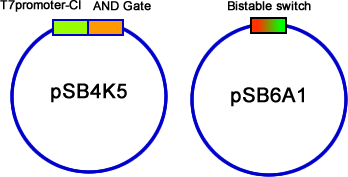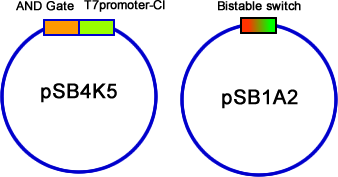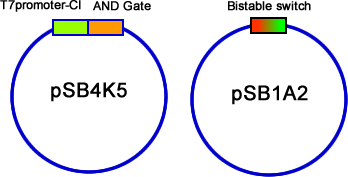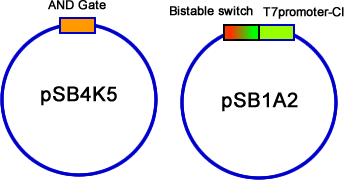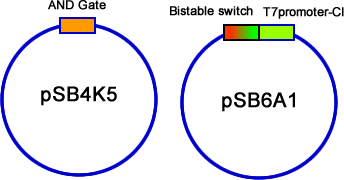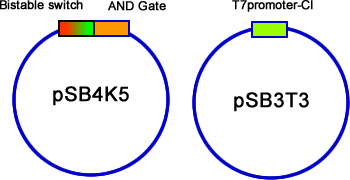Team:PKU Beijing/Project/Assemble
From 2009.igem.org
(→First Stage Assembly) |
(→First Stage Assembly) |
||
| Line 47: | Line 47: | ||
[[Image:PKU_3_plasmid_assembly.png|300px|right|thumb|fig16. Forth strategy---a]] | [[Image:PKU_3_plasmid_assembly.png|300px|right|thumb|fig16. Forth strategy---a]] | ||
[[Image:PKU_3_plasmid_assembly_2.png|300px|right|thumb|fig17. Forth strategy---b]] | [[Image:PKU_3_plasmid_assembly_2.png|300px|right|thumb|fig17. Forth strategy---b]] | ||
| - | + | <br><br><br> | |
The first and second method of assembly can well support second stage assembly, because the bistable switch is on relatively higher copy plasmid, coupling the next module can only have minor interference to it. The third method, although not so promising in further assembly, but we didn’t give up trying it. | The first and second method of assembly can well support second stage assembly, because the bistable switch is on relatively higher copy plasmid, coupling the next module can only have minor interference to it. The third method, although not so promising in further assembly, but we didn’t give up trying it. | ||
For the final method, which works out (see [[result section]]), its further assembly is also promising. It is discussed in the [[Second Stage assembly section]]. | For the final method, which works out (see [[result section]]), its further assembly is also promising. It is discussed in the [[Second Stage assembly section]]. | ||
| - | + | <br><br><br><br><br><br><br><br><br> | |
===='''Result'''==== | ===='''Result'''==== | ||
Revision as of 17:20, 15 October 2009
|
|||||||||||||
|
|||||||||||||
 "
"





